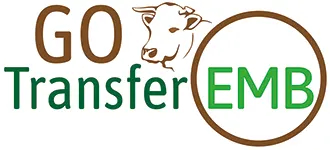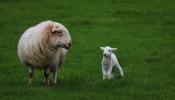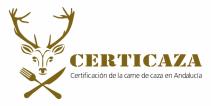
TRANSFER-EMB Operational Group: Improving reproductive eco-efficiency in beef production through embryo transfer
- Type Operational group
- Status In progress
- Execution 2023 -2025
- Assigned Budget 292.876,00 €
- Scope Autonómico
- Autonomous community Andalucía
- Project website GO TRANSFER-EMB
The beef sector is a livestock activity that generates enormous wealth in our country from an economic, social, and environmental perspective. However, due to globalization and the loss of household purchasing power, beef consumption in Spain has gradually declined in recent years.
If raw material and energy prices continue their current trend, production costs are expected to rise, resulting in increasingly expensive meat production and therefore less affordable for consumers. Therefore, if the sector does not react by implementing innovative solutions, the downward trend in beef consumption in our country is expected to worsen, with the consequent abandonment of the activity of a greater number of beef producers due to their inability to obtain profitability from their production.
Given this situation, it is essential to design strategies that guarantee the viability of the beef cattle sector in Andalusia, improving internal relationships among the various links in the agri-food chain and seeking unified action to facilitate the sector's efficiency to ensure a strong future for production in the markets. The Angus and Limousine breeds are characterized by their high meat yield and are considered two of the best meats in the world for their soft texture, flavor, and tenderness.
Beef cattle farmers see embryo transfer as an opportunity to meet the high consumer demand for this meat. Embryo transfer in cattle is a reproductive technique under constant development, which means that numerous studies, with varying success rates, coexist in the literature specific to the beef sector. It is a program that begins with the selection of donors and recipients and ends with the post-transfer pregnancy diagnosis. The reproductive success of the final product derives from all the initial, intermediate, and final steps of the procedure, as there are no single procedures that result in success, nor are there ideal techniques.
The work to be carried out can be summarized in the following main activities:
- Coordination, monitoring of execution and drafting of results reports.
- State of the art on proposed technologies and selection and monitoring of farms.
- Embryos for the transfer program.
- Transfer of embryos to recipients.
- Design of digital tools to facilitate control and support decision-making in the artificial insemination process in beef cattle.
- Monitoring of calves obtained during fattening.
- Dissemination plan of the Operational Group.
The main objective of this project is to improve the productive eco-efficiency of beef production in extensive Andalusian systems through embryo transfer.
- Coordinator/entity name: CorSevilla, Andalusian Cooperative Society
- Postal address: Guadalcanal Road, km 1, 41370 Cazalla de la Sierra, Seville
- Coordinator/entity email: veterinarian@corsevilla.es
- Telephone: 650498591
- CorSevilla, Soc. Coop. Andaluza
- Centro de Investigación y Calidad Agroalimentaria del Valle de los Pedroches (CICAP) (bplazuelo@cicap.es)
- Equus Ibérica reproducción equina, S.L. (admin@equusiberica.com)
- UNIVERSIDAD DE CORDOBA (AGR-019) (am1esdub@uco.es)
- UNIVERSIDAD DE CORDOBA (AGR-195) (eangon@uco.es)
- CorSevilla, Soc. Coop. Andaluza






